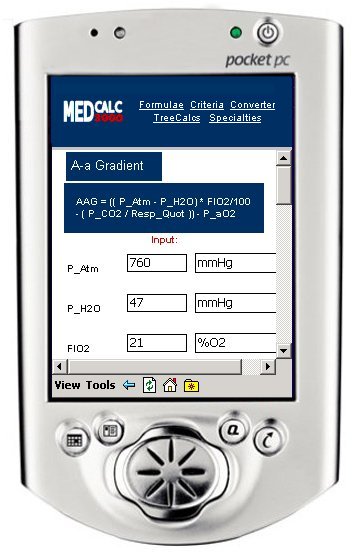|
MedCalc 3000, the most popular web based medical calculator is now available for use in handheld Windows CE operating system devices.
This CE version of MedCalc 3000 will work on many CE devices such as the HP
Jornada and Compaq iPaq Pocket PC's. Your handheld device
must have a JavaScript capable version of Pocket Internet Explorer, as most modern Pocket PC's currently do.
The system may be installed to a memory card if you don't have suffcient main memory (MedCalc 3000 requires
about 2.2 MB of memory.)
Below are some screenshots and examples of the system in action:
Using MedCalc 3000 on Your Handheld
After a simple installation process, the MedCalc 3000 system will appear in your handheld's main applications page ready for use. When you tap on the icon to
start the system, you will see the opening screen illustrated on the right.
The upper part of the screen holds links to the Equations and Clinical Criteria menus. Tap the
MedCalc 3000 logo to bring you back to this introductory screen.
|

|
|








